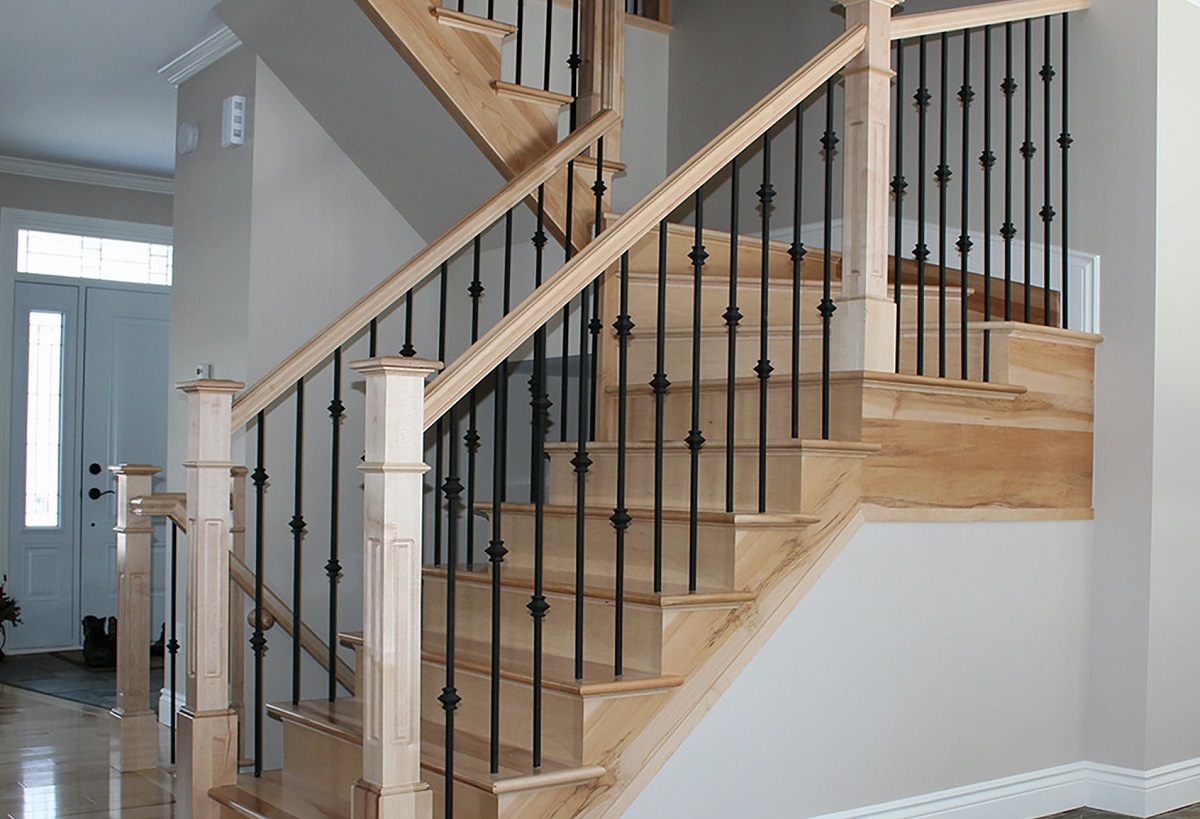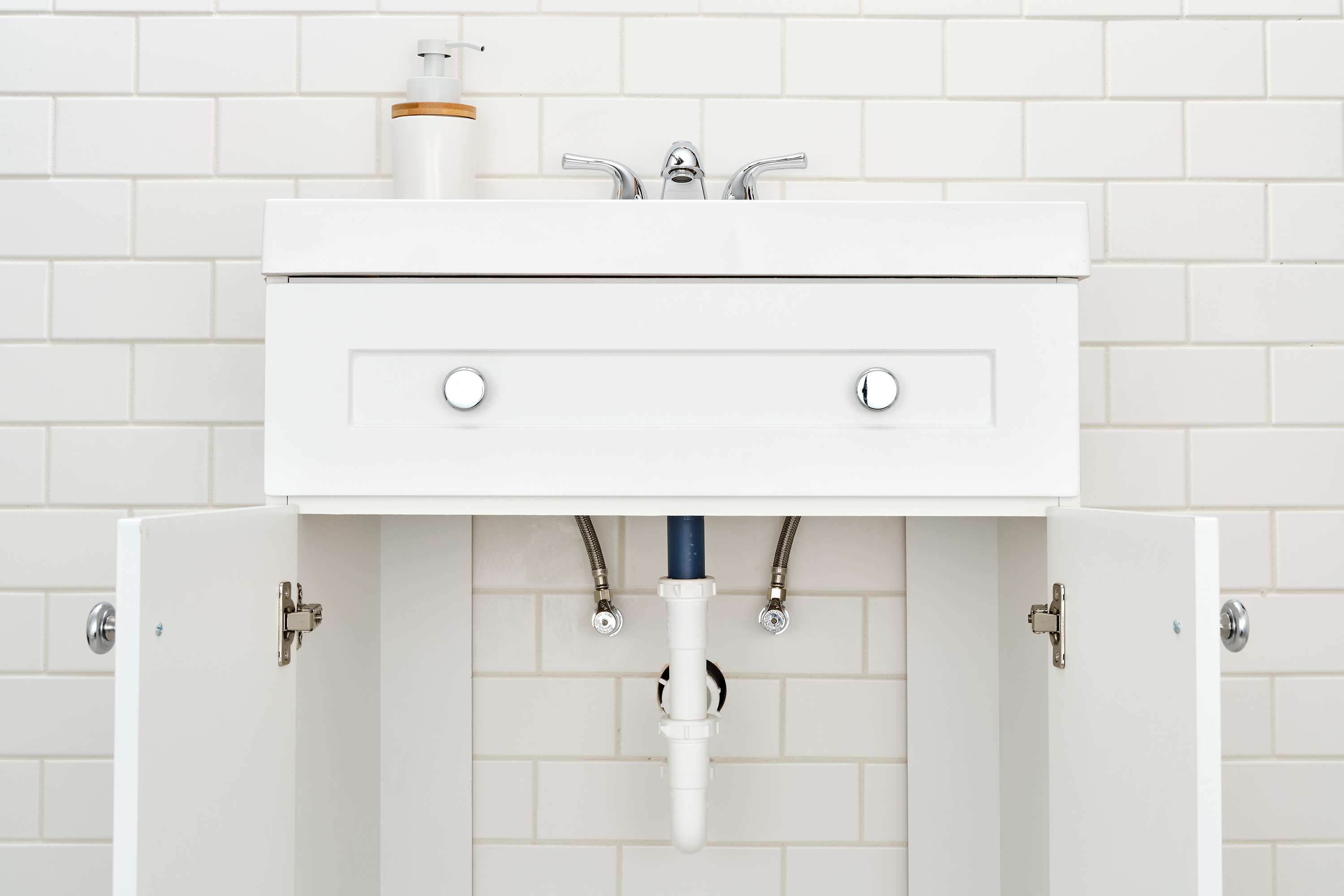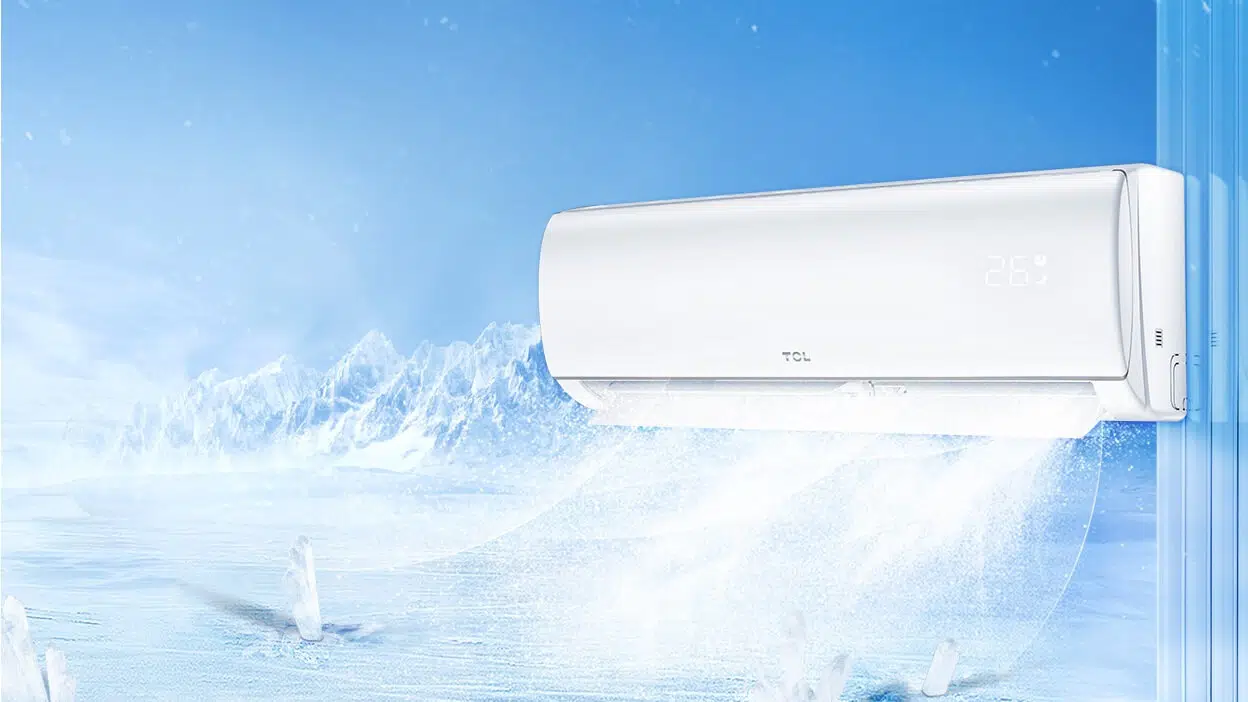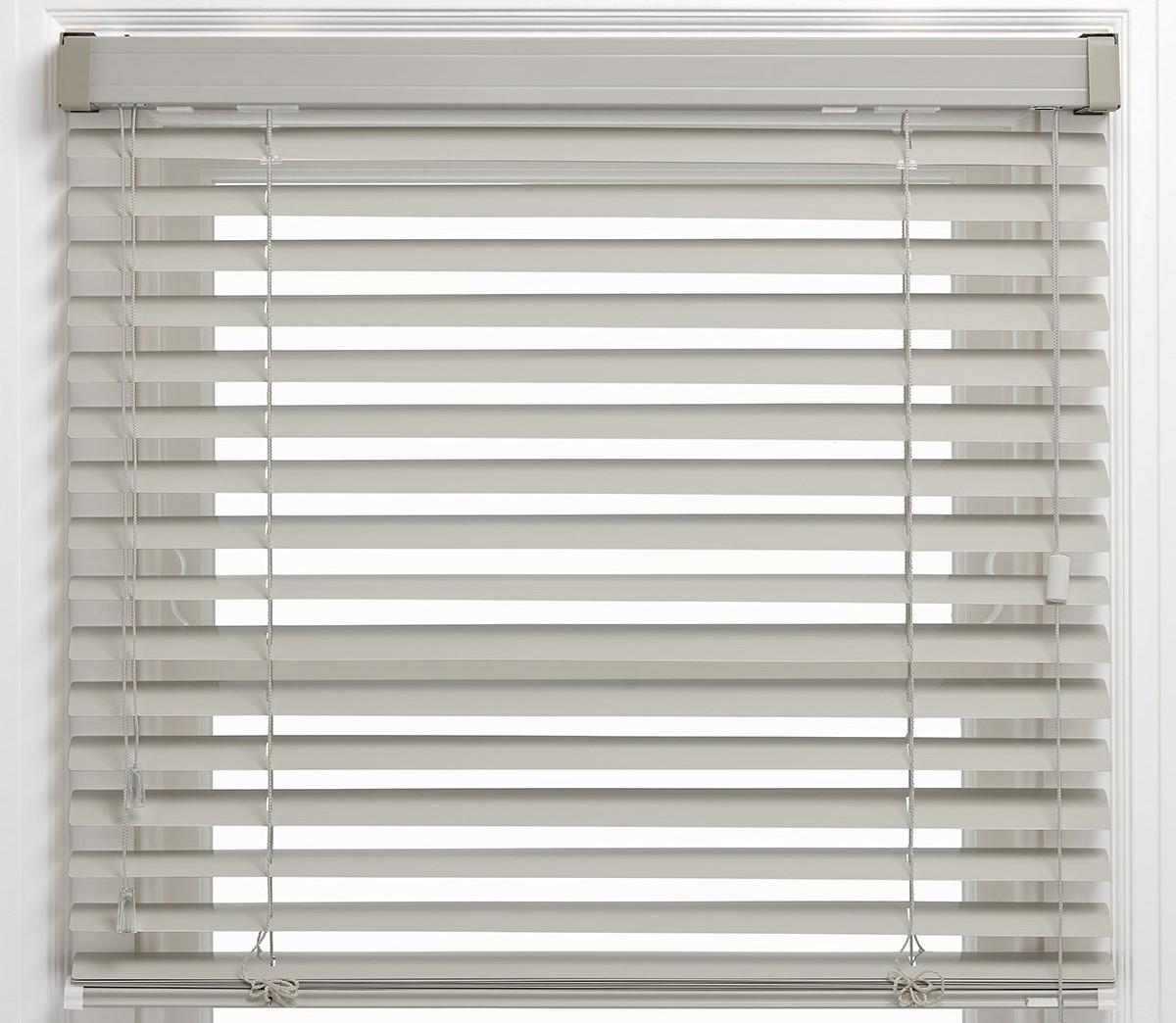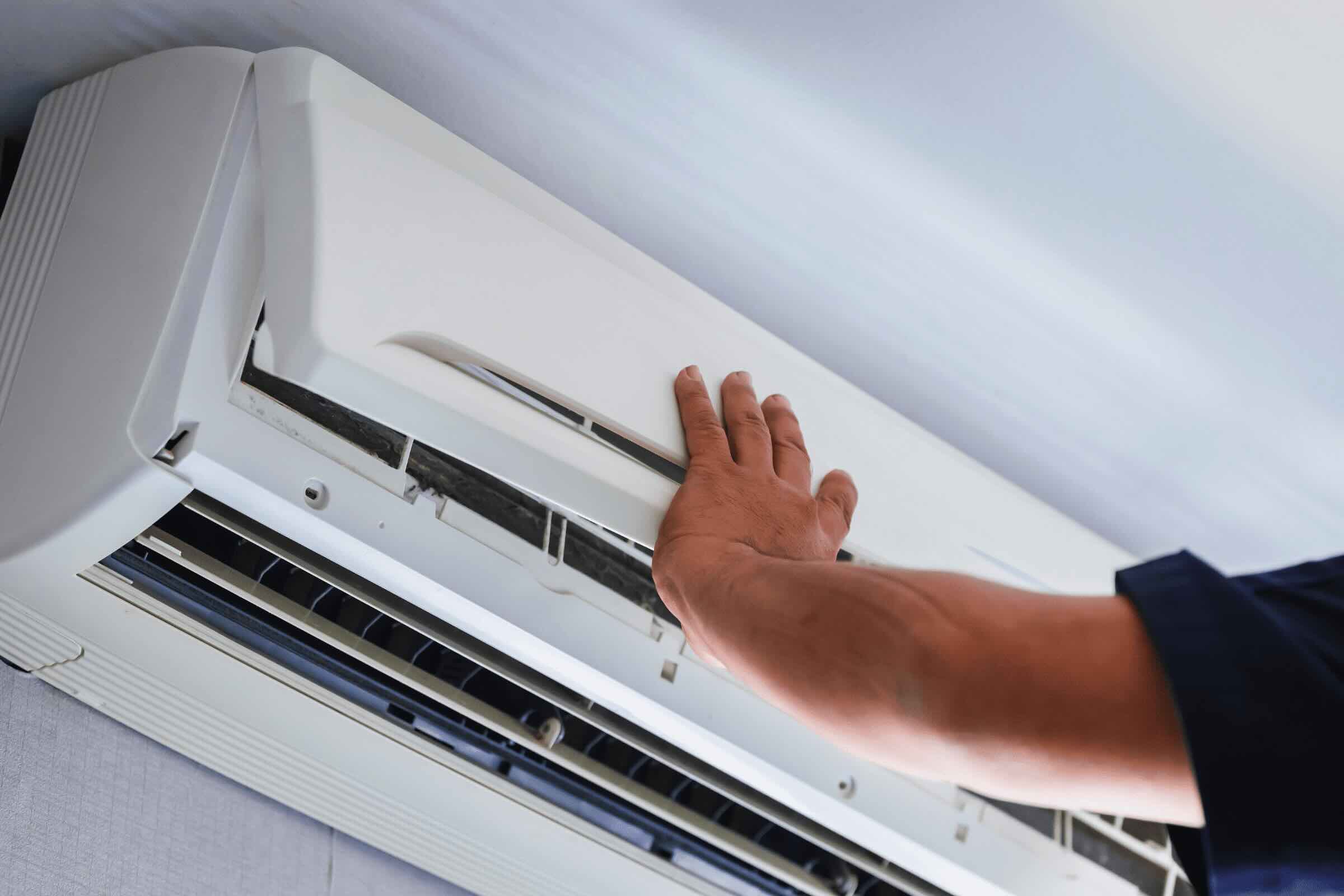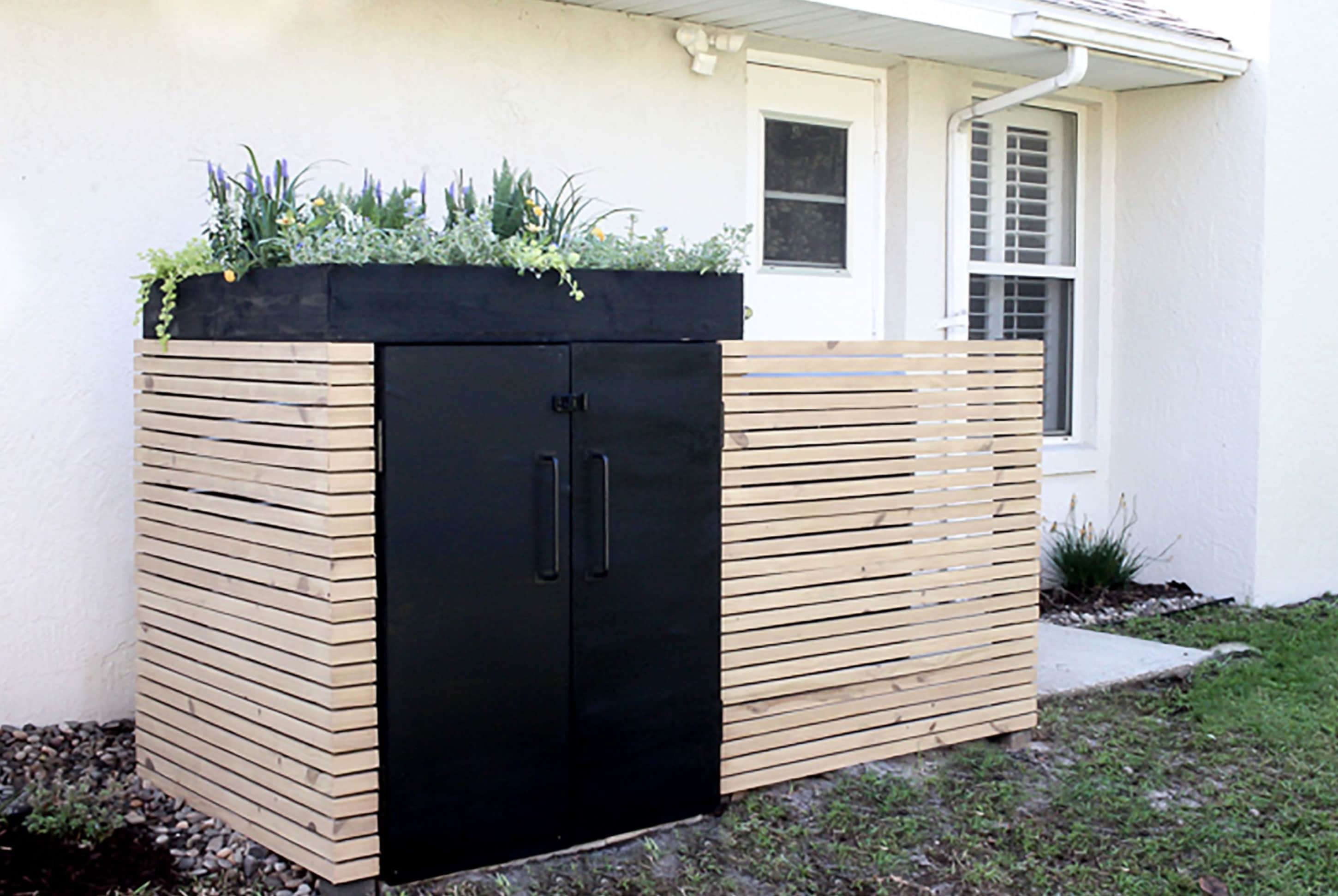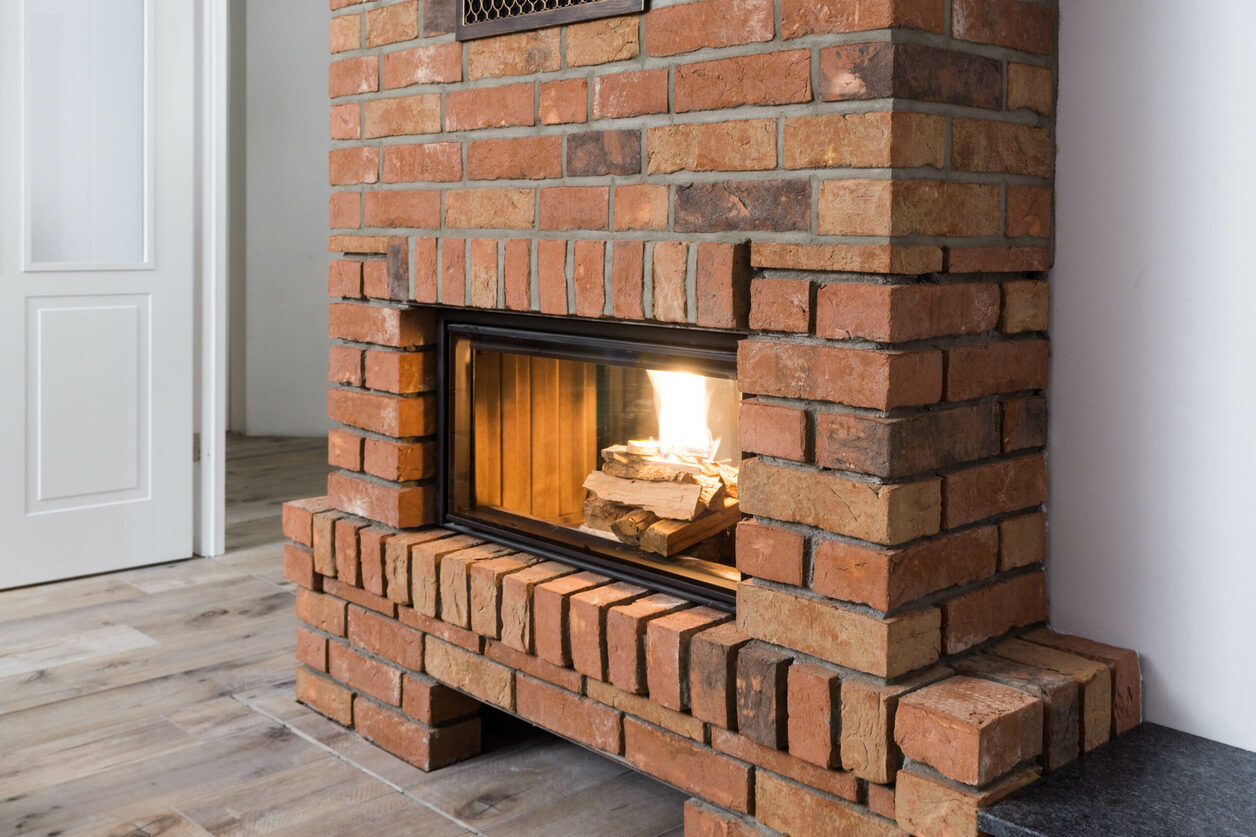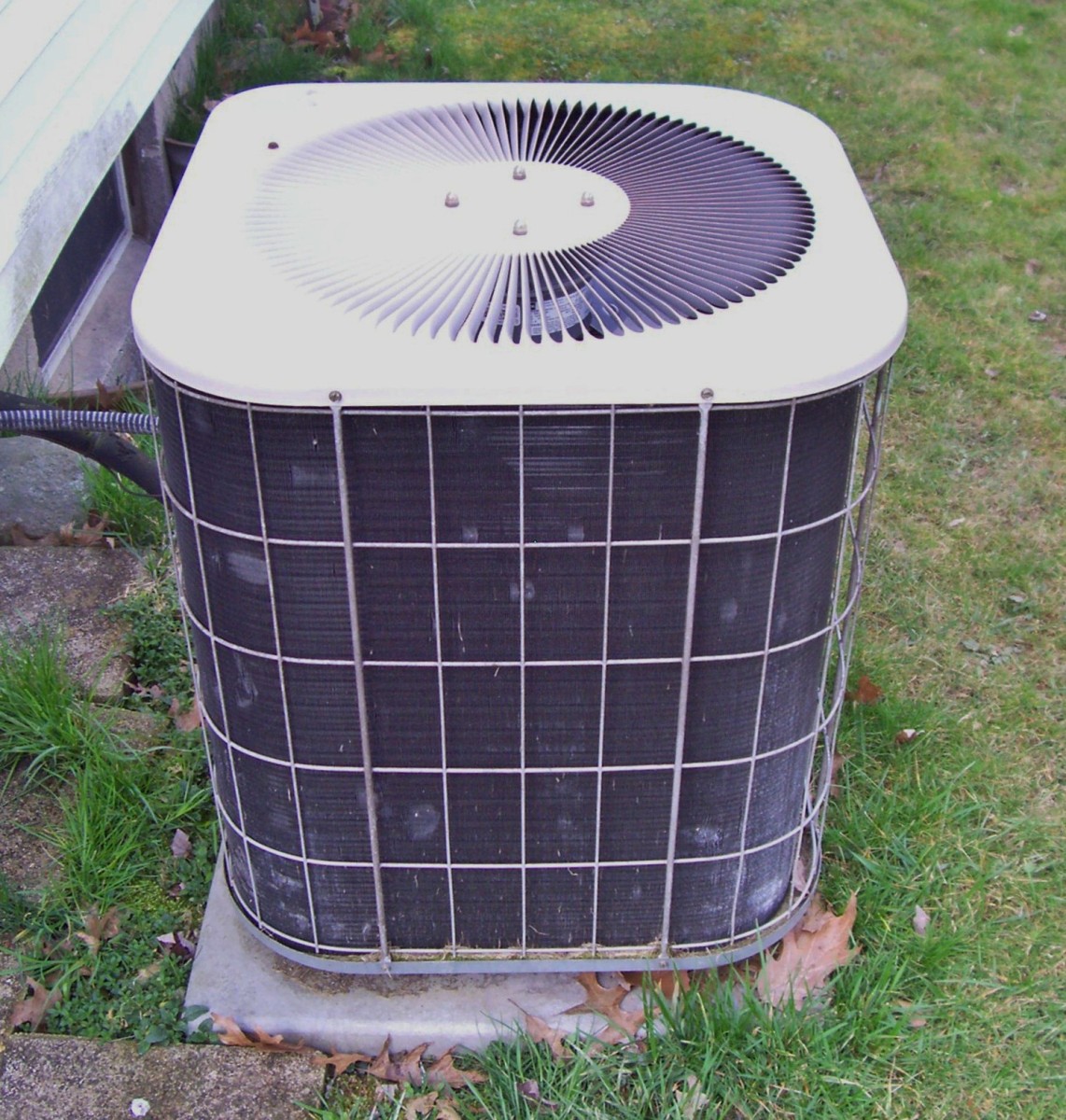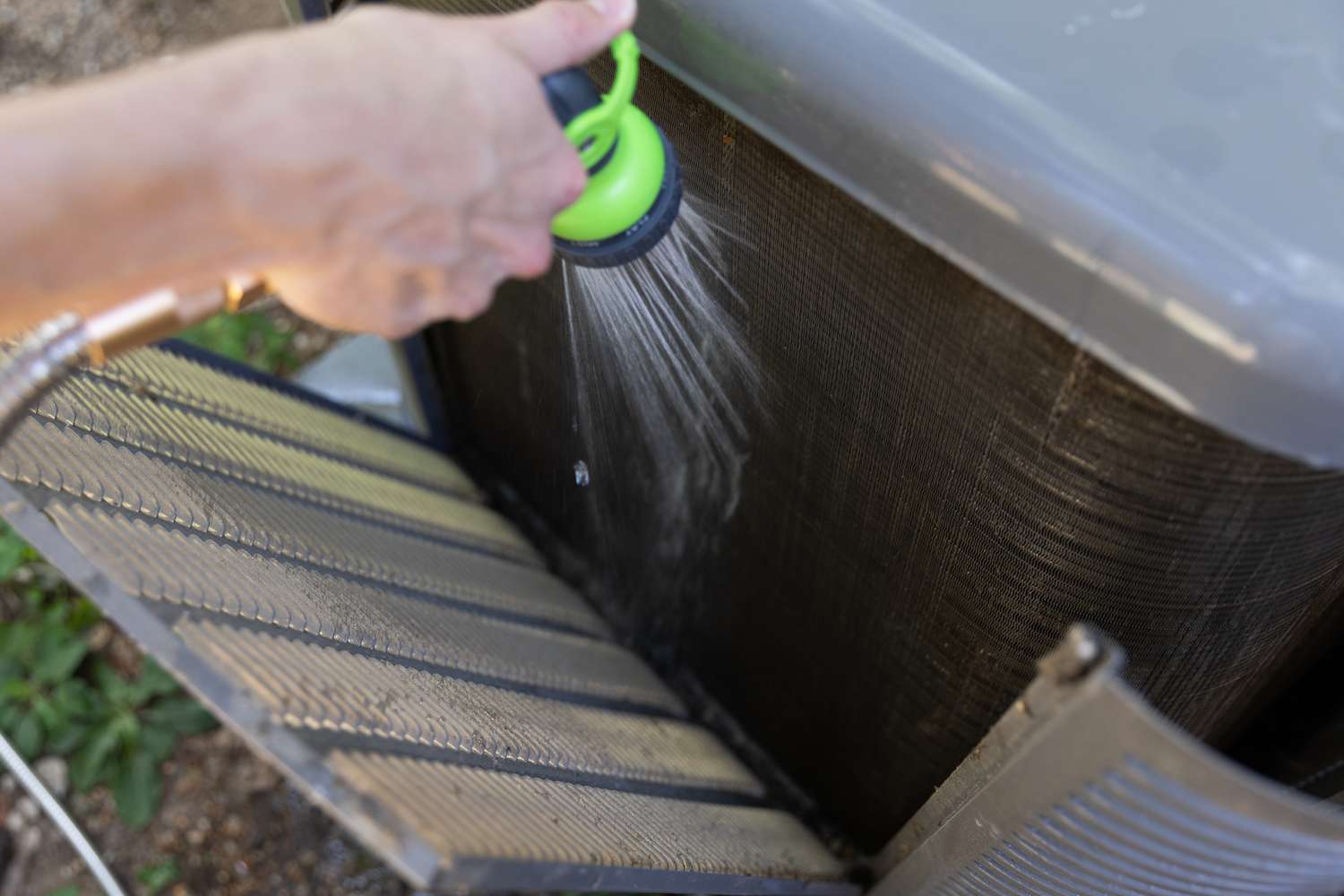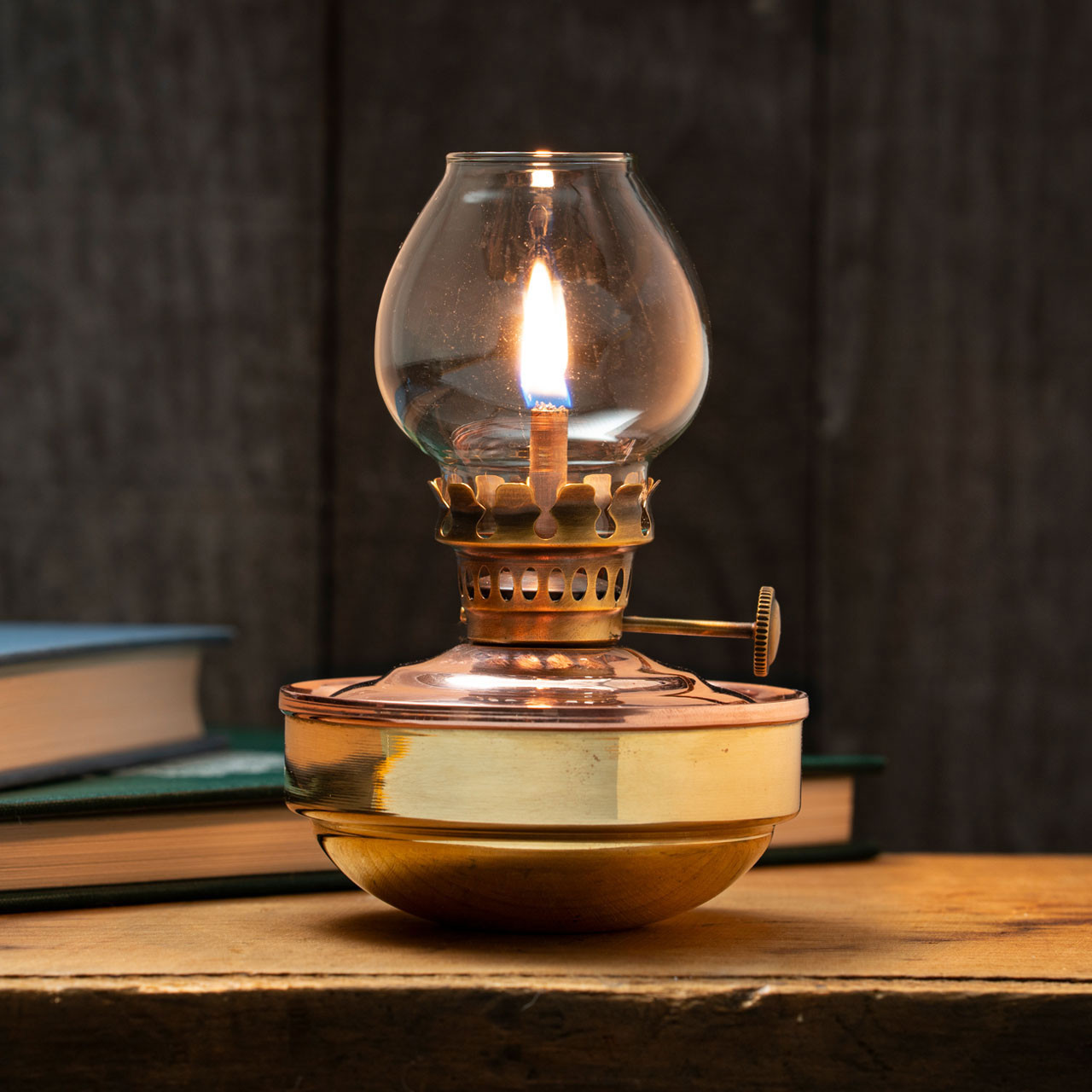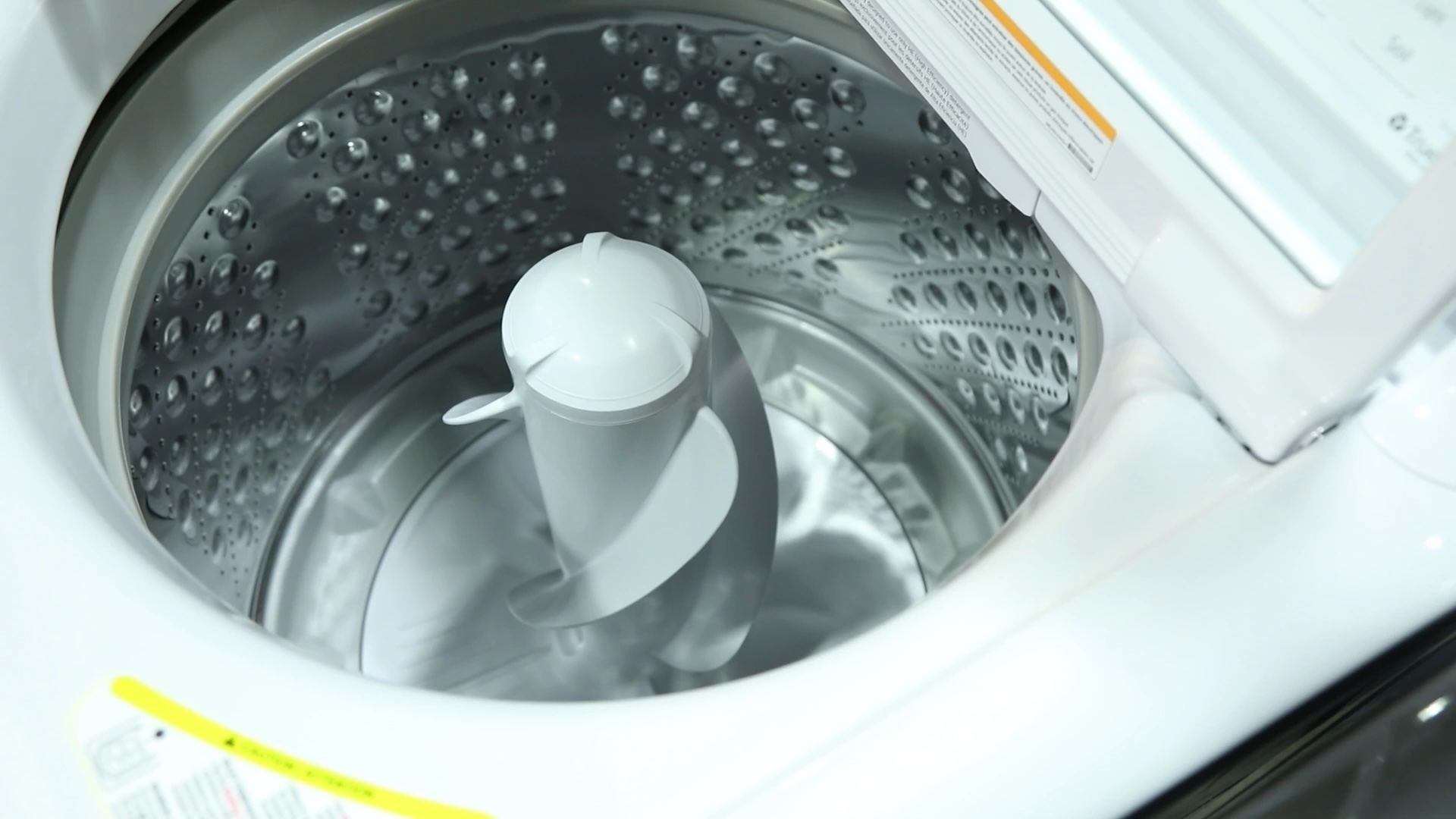Home>Home Maintenance>What Is The Outside Part Of An Air Conditioner Called
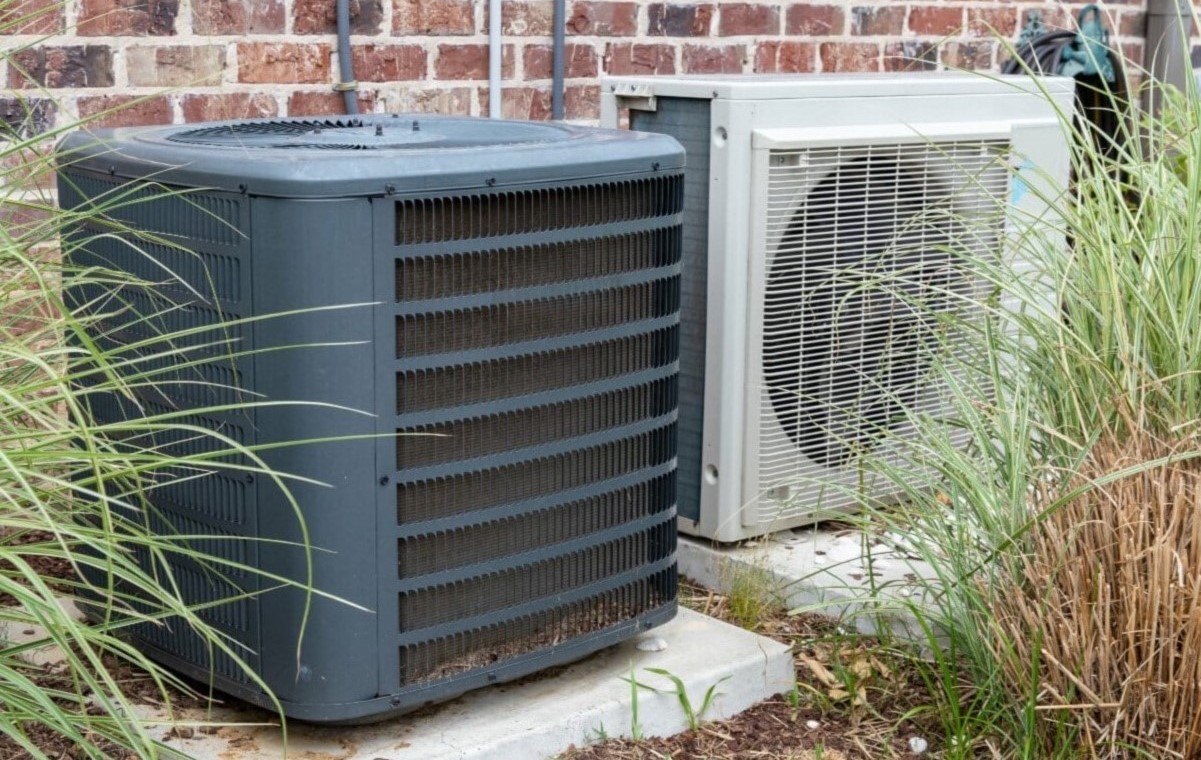

Home Maintenance
What Is The Outside Part Of An Air Conditioner Called
Modified: March 7, 2024
Learn about the essential home maintenance task of caring for the outside part of an air conditioner, also known as the condenser unit. Discover tips and advice for keeping it clean and in optimal condition.
(Many of the links in this article redirect to a specific reviewed product. Your purchase of these products through affiliate links helps to generate commission for Storables.com, at no extra cost. Learn more)
Introduction
Welcome to our comprehensive guide on the outside part of an air conditioner. When it comes to home maintenance, understanding the various components and functions of your air conditioning unit is crucial. The outside part of an air conditioner, often called the outdoor unit or condenser unit, plays a vital role in the cooling process.
In this article, we will explore the importance of the outside part of an air conditioner and discuss its various components. We will delve into how the outside part works and the maintenance steps you can take to ensure its optimal functioning. By the end, you’ll have a clear understanding of this essential part of your air conditioner and how to keep it in top condition.
So, let’s dive in and discover more about the outside part of an air conditioner!
Key Takeaways:
- The outside part of an air conditioner, also known as the condenser unit, is crucial for releasing heat and ensuring efficient cooling. Regular cleaning, inspection, and professional maintenance are essential for its optimal performance.
- Understanding the components and functions of the outside part, such as the condenser, compressor, fan, coil, and housing, can help maintain a comfortable and cool home environment. Proper care and attention contribute to the longevity and reliability of the air conditioning system.
The Importance of the Outside Part of an Air Conditioner
The outside part of an air conditioner is a critical component of the overall system. It is responsible for releasing heat absorbed from the indoor air, allowing the air conditioning unit to cool your home effectively. Without a properly functioning outside part, your air conditioner would not be able to provide the desired cooling comfort.
One of the primary functions of the outside part, also known as the condenser unit, is to dissipate heat. It does this by circulating refrigerant through a series of coils and fins. The refrigerant absorbs the heat from inside your home and carries it to the outdoor unit. Then, the outside part of the air conditioner uses a fan to blow air over the coils, facilitating heat transfer into the surrounding air.
This heat exchange process is crucial for the efficient operation of your air conditioner. If the outside part is unable to release heat effectively, it can lead to reduced cooling performance and increased energy consumption. Furthermore, a malfunctioning condenser unit can place added strain on the compressor, which could eventually lead to costly repairs or even the need for a replacement.
Another reason why the outside part of an air conditioner is essential is due to its role in noise reduction. Since the outside part is located outdoors, it helps to minimize the noise generated by the operation of the air conditioner. This ensures a quieter and more comfortable living environment, both inside and outside your home.
Furthermore, the outside part of an air conditioner is designed to withstand various weather conditions, including extreme heat, cold, rain, and wind. Its durable construction and protective housing keep the internal components safe and functioning optimally. This ensures the longevity and reliability of your air conditioning system, reducing the need for frequent repairs or replacements.
In summary, the outside part of an air conditioner is essential for effective cooling, efficient heat dissipation, noise reduction, and the overall longevity of the system. By understanding its importance, you can appreciate the need for regular maintenance and take necessary steps to ensure its proper functioning.
Components of the Outside Part of an Air Conditioner
The outside part of an air conditioner consists of several key components that work together to facilitate the cooling process. Understanding these components will help you grasp how the outside part functions and how to identify and troubleshoot any issues that may arise.
Here are the main components of the outside part of an air conditioner:
- The Condenser: The condenser is a vital component of the outside part. It contains a network of tubes and fins and is responsible for releasing heat absorbed from the indoor air. The refrigerant, in gas form, enters the condenser and is condensed into a liquid as heat is released into the surrounding air.
- The Compressor: The compressor, often referred to as the heart of the air conditioner, is responsible for pressurizing the refrigerant gas. It plays a critical role in the heat exchange process by compressing the refrigerant and propelling it through the system, from the indoor evaporator coil to the outdoor condenser coil.
- The Fan: The outside part of an air conditioner typically has one or two fans. These fans are responsible for blowing air over the condenser coils, aiding in the heat dissipation process. They extract the heat from the refrigerant and expel it into the surrounding air. The fan also helps to draw in fresh air, ensuring adequate airflow for efficient cooling.
- The Coil: The outside part contains an outdoor coil, also known as the condenser coil. This coil consists of a network of tubes and fins that facilitate the heat transfer process. As the refrigerant circulates through the coil, it releases heat, which is then transferred to the surrounding air.
- The Housing: The housing serves as a protective enclosure for the components of the outside part. It is typically made of durable materials, such as metal or heavy-duty plastic, to shield the internal components from the elements and provide insulation against noise. The housing also helps to improve the aesthetic appearance of the outside unit.
These components work together in a synchronized manner to ensure efficient cooling and heat dissipation in your air conditioning system. Understanding the role of each component will empower you to identify potential issues and perform necessary maintenance or seek professional assistance to keep your air conditioner operating at its best.
The Condenser
The condenser is a critical component of the outside part of an air conditioner. It plays a key role in the heat exchange process and is responsible for releasing the heat absorbed from the indoor air. Understanding how the condenser works will give you a better understanding of how the outside part functions.
The condenser consists of a series of tubes and fins that are designed to facilitate the transfer of heat. After the refrigerant absorbs heat from inside your home, it becomes a high-pressure gas. This gas is then directed to the condenser, where it is condensed back into a liquid form as heat is released.
As the high-pressure gas enters the condenser, it passes through the tubes. These tubes are typically made of copper or aluminum due to their excellent heat conductivity. The refrigerant gives off heat as it comes into contact with the walls of the tubes. This heat is transferred to the external surface of the condenser unit.
The exterior of the condenser unit is equipped with fins that provide a larger surface area. These fins help to enhance heat transfer, allowing the heat from the refrigerant to dissipate more effectively into the surrounding air. The condenser fan, located behind the fins, blows air over the fins, facilitating the heat exchange process.
As the condenser fan blows air over the hot condenser coils, the heat from the refrigerant is transferred to the airflow. This leads to a gradual decrease in temperature of the refrigerant, causing it to condense back into a liquid form. The liquid refrigerant then continues its journey through the system to be re-evaporated and repeat the cooling process.
The condenser is typically located in the outdoor unit of the air conditioner, as it requires ample space and ventilation. Its positioning allows for effective heat dissipation into the outdoor air, preventing any buildup of heat inside the home.
Regular maintenance and cleaning of the condenser unit are essential to ensure its optimal performance. Accumulated dirt, debris, or dust on the fins can hinder airflow and reduce the condenser’s efficiency. Cleaning the condenser coils and inspecting the fins for any damage should be part of your routine maintenance tasks.
In summary, the condenser is a crucial component of the outside part of an air conditioner. It plays a vital role in releasing heat and facilitating the heat exchange process. Understanding the function of the condenser will help you identify any potential issues and take the necessary steps to maintain its optimal performance.
The Compressor
The compressor is often referred to as the heart of an air conditioner and is one of the most important components of the outside part. It plays a critical role in the cooling process by pressurizing the refrigerant gas and propelling it through the system.
The main function of the compressor is to increase the pressure and temperature of the refrigerant gas, allowing it to circulate through the air conditioning system and facilitate the heat exchange process. The compressor acts as a pump, exerting pressure on the refrigerant and propelling it from the indoor evaporator coil to the outdoor condenser coil.
The compressor is typically located within the outside part of the air conditioner, enclosed in a protective housing. It is powered by an electric motor that drives the piston or scroll mechanism inside. As the piston or scroll moves, it compresses the refrigerant gas, raising its pressure and temperature.
The compression process is essential because it enables the refrigerant to absorb heat efficiently from the indoor air. As the refrigerant flows through the evaporator coil, it collects heat from the surrounding air. The low-pressure, low-temperature gas is transformed into a high-pressure, high-temperature gas by the compressor.
After being compressed, the high-pressure refrigerant gas is then directed to the condenser, where it will release the absorbed heat. The compressor helps maintain the flow of refrigerant throughout the system, ensuring the efficient functioning of the air conditioner.
It’s important to note that the compressor consumes a significant amount of electricity to perform its function. Therefore, it is designed to operate in cycles or on-demand, controlled by the thermostat. When the temperature in the space being cooled rises, the thermostat signals the compressor to start, and when the desired temperature is reached, the compressor shuts off.
Regular maintenance and proper care of the compressor are crucial to ensure its optimal performance and longevity. This includes keeping the compressor clean and free of debris, inspecting for any signs of wear or damage, and scheduling periodic professional maintenance checks.
In summary, the compressor is a vital component of the outside part of an air conditioner. It pressurizes the refrigerant gas, allowing it to flow through the system and facilitate the heat exchange process. Understanding the role of the compressor will help you appreciate its significance and the need for proper maintenance to ensure efficient cooling and longevity of your air conditioning system.
Read more: What Are The Parts Of An Air Conditioner
The Fan
The fan is an essential component of the outside part of an air conditioner. It plays a crucial role in facilitating the heat exchange process and ensuring proper airflow to enhance the cooling efficiency of the system.
The outside part of an air conditioner usually has one or two fans, depending on the size and design of the unit. These fans are responsible for drawing in fresh air and blowing it across the condenser coils.
When the refrigerant gas enters the condenser, it releases heat that needs to be dissipated into the surrounding air. The fan’s primary function is to blow air over the condenser coils, aiding in heat transfer. As the fan spins, it creates a constant flow of air, ensuring that the heat from the coils is efficiently transferred to the airflow.
The movement of the air over the condenser coils helps to cool them down, allowing the refrigerant to condense back into a liquid state. This cooling process increases the efficiency of the heat exchange and contributes to the overall cooling performance of the air conditioner.
The fan also plays a role in ensuring proper airflow throughout the condenser’s components. Proper airflow is crucial to prevent the buildup of heat and maintain the optimal functioning of the system. Additionally, the fan helps to remove any excess heat generated by the operation of the air conditioner, contributing to its overall cooling effectiveness.
In addition to providing airflow for heat exchange, the fan also helps to reduce noise levels. While air conditioners do generate some noise during operation, the fan in the outside part helps to minimize the noise by providing a buffer between the internal components and the surrounding environment. This allows for a quieter and more comfortable living space.
Just like other components of the air conditioner, regular maintenance of the fan is important for optimal performance. Over time, dirt, dust, and debris can accumulate on the fan blades, hindering its ability to generate proper airflow. Therefore, it is essential to clean the fan blades regularly and ensure they are free from any obstructions.
In summary, the fan is a vital component of the outside part of an air conditioner. It is responsible for drawing in fresh air, blowing it across the condenser coils for heat exchange, and ensuring proper airflow to maintain the system’s efficiency. By understanding the role of the fan, you can appreciate its significance in the cooling process and the need for regular maintenance to ensure optimal performance.
The outside part of an air conditioner is called the condenser unit. It is responsible for releasing the heat from inside your home to the outside. Regular maintenance of the condenser unit can help improve the efficiency and lifespan of your air conditioner.
The Coil
The coil is an integral component of the outside part of an air conditioner. It plays a vital role in the heat exchange process, allowing for efficient cooling and optimal performance of the air conditioning system.
The outside part of an air conditioner contains an outdoor coil, also known as the condenser coil. This coil is made up of a network of tubes and fins that facilitate the transfer of heat from the refrigerant to the surrounding air.
As the high-pressure refrigerant gas enters the condenser, it flows through the tubes that make up the coil. These tubes are typically made of copper or aluminum due to their excellent heat conductivity properties. The refrigerant gives off heat as it moves through the coil and comes into contact with the tube walls.
The heat absorbed by the refrigerant is transferred to the metal walls of the coil tubes. Conversely, the refrigerant cools down and begins to condense back into a liquid state as it releases heat. This condensing process is vital for the subsequent cooling cycle.
The condenser coil also contains fins that are attached to the tubes. These fins increase the surface area of the coil, allowing for more efficient heat transfer. As the refrigerant passes through the coil and releases heat, the fins help to dissipate the heat into the surrounding air.
Proper airflow is crucial for the coil’s optimal performance. The condenser fan, located behind the coil, blows air over the fins, enhancing the heat exchange process. This airflow ensures that heat is effectively transferred to the surrounding environment, resulting in efficient cooling of the refrigerant.
Maintaining the cleanliness of the coil is essential for its efficient operation. Over time, dirt, dust, and debris can accumulate on the coil’s fins, hindering airflow and reducing heat transfer efficiency. Regular cleaning of the coil, either by gently brushing away debris or using a specialized coil cleaner, can help maintain its performance.
Additionally, it’s important to inspect the coil for any signs of damage, such as bent fins or leaks. Bent fins can obstruct airflow, while leaks can lead to refrigerant loss, impacting the cooling capacity of the air conditioner. In such cases, it is recommended to seek professional assistance to repair or replace the damaged coil.
In summary, the coil is a critical component of the outside part of an air conditioner. It facilitates the heat exchange process, allowing for efficient cooling and optimal performance of the system. Regular maintenance, including cleaning and inspection, is crucial to ensure the coil’s proper functioning and enhance the longevity of your air conditioning unit.
The Housing
The housing of the outside part of an air conditioner is an important component that provides protection, insulation, and aesthetic appeal. It serves as an enclosure for the internal components of the unit and plays a vital role in maintaining their optimal functioning.
The housing is typically made of durable materials such as metal or heavy-duty plastic. These materials are chosen for their ability to withstand various weather conditions, including extreme temperatures, rain, and wind. The housing acts as a shield, protecting the internal components from the elements and preventing damage.
In addition to providing protection, the housing also helps to insulate the outside part of the air conditioner. It helps to control and maintain the internal temperature of the unit, ensuring that it operates efficiently. By creating a barrier between the internal components and the external environment, the housing helps to minimize heat gain or loss, allowing the unit to function optimally.
The housing also plays a role in noise reduction. Air conditioners can generate some noise during operation, and the housing helps to contain and dampen the sound. Its design and construction help reduce vibrations and absorb noise, resulting in a quieter operation both inside and outside the home.
Furthermore, the housing is designed with aesthetics in mind. It is often styled and finished to blend in with the exterior of the home. This ensures that the outside part of the air conditioner is not an eyesore and maintains the overall visual appeal of the property.
Regular maintenance of the housing is necessary to ensure its functionality and durability. This may include cleaning the exterior surfaces to remove dirt and debris, checking for any signs of wear or damage, and ensuring that the housing is securely positioned to prevent any movement or vibrations.
If the housing shows signs of significant damage or deterioration, it is important to address the issue promptly. Damaged housing can compromise the performance and longevity of the air conditioning unit. In such cases, contacting a professional HVAC technician can help assess the extent of the damage and determine the necessary steps for repair or replacement.
In summary, the housing of the outside part of an air conditioner serves as a protective enclosure, providing insulation, noise reduction, and aesthetic appeal. It plays a vital role in maintaining the optimal functioning of the air conditioning unit. Regular maintenance and addressing any housing-related issues promptly are crucial for the longevity and performance of your air conditioner.
How the Outside Part Works
The outside part of an air conditioner, also known as the outdoor unit or condenser unit, works in conjunction with the indoor unit to cool your home efficiently. Understanding how the outside part operates will give you a clearer picture of its role in the overall air conditioning system.
The outside part is responsible for releasing heat absorbed from the indoor air and facilitating the cooling process. It consists of several key components, including the condenser, compressor, fan, coil, and housing, which work together harmoniously to achieve the desired cooling effect.
Here’s a breakdown of how the outside part works:
- Absorption of Heat: The inside unit of the air conditioner absorbs warm air from your home, passing it over the indoor evaporator coil. As the warm air moves across the evaporator coil, the refrigerant inside the coil absorbs heat from the air.
- Transfer of Refrigerant: The refrigerant, now in a low-pressure, low-temperature state, flows from the indoor unit to the outside part through a connecting line. This line is responsible for transporting the refrigerant between the two units.
- Condensing Process: As the refrigerant enters the outside part, it encounters the condenser coil. The condenser coil is surrounded by the condenser fan, which blows air over the coil. This airflow facilitates the condensing process, during which the refrigerant releases heat and transforms into a high-pressure, high-temperature gas.
- Heat Dissipation: The heat absorbed by the refrigerant is transferred to the fins on the condenser coil. The condenser fan blows ambient air over these fins, causing the refrigerant to cool down and condense back into a liquid state. As the heat dissipates into the surrounding air, the cooled refrigerant continues to flow through the system.
- Pressurization and Propulsion: Once the refrigerant is in a liquid state, it is pressurized by the compressor, which is located within the outside part. The compressor acts as a pump, exerting pressure on the refrigerant and propelling it back to the indoor unit through the connecting line.
- Repeat Cooling Cycle: The pressurized refrigerant flows through the connecting line, returning to the indoor evaporator coil. The refrigerant evaporates within the evaporator coil, absorbing heat from the indoor air once again. This cooling cycle continues until the desired temperature is reached and maintained in your home.
By continuously circulating refrigerant between the inside and outside parts, the air conditioning system effectively regulates temperature, removes heat from your home, and provides a comfortable indoor environment.
Regular maintenance and care, including cleaning the outside part, checking for any issues, and scheduling professional maintenance, are crucial to ensure the optimal functioning of the outside part and the overall efficiency of your air conditioning system.
In summary, the outside part of an air conditioner plays a pivotal role in the cooling process by releasing heat and facilitating the heat exchange between the refrigerant and the outdoor air. It works in harmony with the indoor unit to regulate temperature and provide a comfortable living environment.
Maintenance and Care of the Outside Part
Proper maintenance and care of the outside part of your air conditioner are crucial for ensuring its optimal performance and longevity. By following a few simple maintenance tips, you can help prevent potential issues and keep your air conditioning system running efficiently. Here are some maintenance guidelines for the outside part of an air conditioner:
- Regular Cleaning: Keep the outside part free from dirt, leaves, grass, and other debris that may accumulate on or around the unit. Use a brush or a vacuum with a brush attachment to gently clean the fins and coils. Be careful not to damage the fins, as they are delicate and can affect airflow if bent or damaged.
- Trim Vegetation: Trim any foliage or plants around the outside part to ensure proper airflow. Leaves and branches can obstruct the unit and hinder its performance. Maintain a clear space of at least two feet around the unit to allow for adequate ventilation.
- Inspect for Damage: Regularly inspect the outside part for any signs of damage, such as bent fins, leaks, or cracks in the housing. Damage to the fins can impede airflow, reducing cooling efficiency. If you notice any significant damage, it’s best to consult a professional HVAC technician for repair or replacement.
- Check the Fan: Ensure that the fan blades on the outside part are clean and free from any obstructions. Dirt or debris on the fan blades can affect airflow and reduce the unit’s efficiency. If you notice any issues with the fan, such as unusual noises or wobbling, it’s recommended to have it inspected by a professional.
- Schedule Professional Maintenance: Regular professional servicing is vital for the proper functioning of your air conditioning system. HVAC technicians can perform a thorough inspection of the outside part, clean the coils, check refrigerant levels, lubricate moving parts, and identify any potential issues before they become major problems.
- Protect from Harsh Weather: During extreme weather conditions, such as strong winds, storms, or hail, it’s advisable to protect the outside part of the air conditioner. Use a cover or a specialized hail guard to shield the unit from potential damage. However, ensure that the cover is removed before operating the air conditioner to prevent overheating.
- Keep the Area Clean: Maintaining a clean and clutter-free environment around the outside part of the air conditioner is essential. Avoid storing items or placing objects that may obstruct airflow or potentially cause damage to the unit.
Following these maintenance and care tips will help ensure that the outside part of your air conditioner operates efficiently and provides optimal cooling performance. Regular maintenance not only extends the lifespan of your air conditioning system but also helps conserve energy and reduce the risk of unexpected breakdowns.
If you are unsure about any maintenance tasks or notice any significant issues with the outside part of your air conditioner, it is recommended to consult a professional HVAC technician. They have the expertise to perform thorough inspections, address any concerns, and provide necessary repairs or maintenance.
In summary, regular cleaning, inspecting for damage, scheduling professional maintenance, and keeping the area around the outside part clean are essential for proper upkeep and care. By taking these steps, you can ensure the longevity, efficiency, and reliable functioning of your air conditioning system.
Conclusion
The outside part of an air conditioner, also known as the condenser unit, is a crucial component of the overall cooling system in your home. Understanding its importance, components, and how it works can help you maintain and care for it effectively.
The condenser unit is responsible for releasing heat from the refrigerant, allowing for efficient cooling. Its components, including the condenser, compressor, fan, coil, and housing, work together to facilitate the heat exchange process and maintain optimal airflow.
Regular maintenance and care of the outside part are essential to ensure its optimal performance. This involves cleaning the unit, inspecting for damage, trimming vegetation around it, and scheduling professional maintenance to address any potential issues.
By maintaining the outside part of your air conditioner, you can ensure its longevity, reliability, and energy efficiency. A well-maintained outside part contributes to the overall effectiveness of your air conditioning system, providing a comfortable and cool environment in your home.
Remember, if you are unsure about any maintenance tasks or encounter significant issues, it’s always best to consult a professional HVAC technician. They have the expertise to address any concerns and provide necessary repairs or maintenance to keep your air conditioner running smoothly.
In conclusion, by understanding the importance of the outside part of an air conditioner and implementing proper maintenance and care, you can enjoy efficient cooling, save on energy costs, and extend the lifespan of your air conditioning system.
Frequently Asked Questions about What Is The Outside Part Of An Air Conditioner Called
Was this page helpful?
At Storables.com, we guarantee accurate and reliable information. Our content, validated by Expert Board Contributors, is crafted following stringent Editorial Policies. We're committed to providing you with well-researched, expert-backed insights for all your informational needs.
